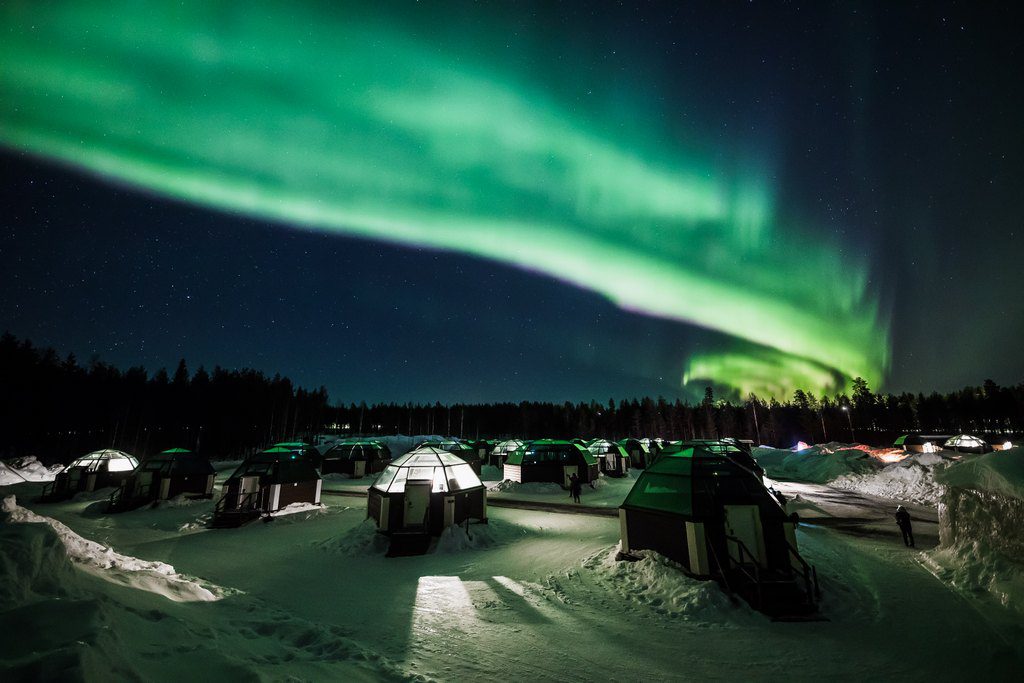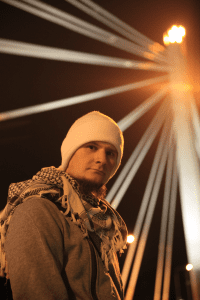Up All Night, Searching for the Lights: A Finnish Hotel's Aurora Watcher

Skift Take
For thousands of years the northern lights were a mysterious phenomenon that lit up the sky with spectacular shades of pink, green, yellow, and blue, leaving communities grasping for explanations. Some took the lights as a bad omen, believing they symbolized death or impending war. Others welcomed them as a blessing.
In Finland, many attributed the lights to the mythical firefox. Rumor has it that as the firefox ran through the snow-covered forests, its fiery tail created sparks that lit up the sky. The Finnish word for northern lights, “revontulet,” literally translates to “fox fires.”
To take advantage of this spectacular backdrop, the Arctic SnowHotel in northern Finland has hired Mikko Anetjärvi to alert staff and guests to the occurrence of the lights — also called the aurora borealis. He is the hotel's "aurora watcher," a position he says he was groomed to fill since childhood.
"We saw auroras lot," Anetjärvi said. "I have one memory of running outside without shoes when I was a child because my parents said they were so strong."
Ville Haavikko opened Arctic SnowHotel just outside of Rovaniemi 12 years ago. While the area is famous for winter activities, the hotel is a destination unto itself — from floor to ceiling, it's entirely made out of snow.
And making an entire hotel out of snow is no easy feat. Every winter, as soon as the temperature drops to -10 degrees celsius (14 F), Haavikko and his employees take water from a nearby lake, load it into a machine and turn it into snow — 25,000 cubic meters' worth to be exact. The snow is then loaded into steel molds, which remain until the snow is sturdy enough to stand on its own. The entire process takes roughly five weeks to complete.
While most hotels in the area rely on technology to alert staff to northern lights, about six years ago, Haavikko had the idea that using a person might make more sense.
"We originally thought to solve the problem with some technical thing, but then we think it would be better if we had a real human, so the customers really know there is a professional, local person who watches the northern lights," he said.

Mikko Anetjärvi is an "aurora watcher" at Arctic SnowHotel in Northern Finland. Photo: Courtesy Mikko Anetjärvi
When Anetjärvi was growing up on a dairy farm in rural Finland, the northern lights were a regular occurrence.
After finishing high school, Anetjärv set out to study business but quickly switched his major to hospitality and tourism, hoping to someday manage the several vacation cottages owned by his parents. After graduating he found work in Santa’s Village, where he alternated between tour guide and Santa’s helper where, yes, he sometimes had to dress like an elf. He spent two years doing that before he heard about an opening for the position of "aurora watcher." Curious about what it entailed and wanting to learn more about the hospitality industry, he applied and got the job.
One of the biggest adjustments of the new role for Anetjärvi were the hours: His shift starts at 5 p.m. and finishes around 6 a.m.
"At first it was hard to rotate your day and night cycle, but after one week you get used to it and it’s easier," he said. Now, even on his days off he remains nocturnal.
Anetjärvi begins his shifts by checking the Kp-index, which ranks the disturbance of the Earth's magnetic field caused by the solar wind from 0–9. Faster solar wind equals more turbulence — and a greater chance of viewing the northern lights. If the Kp-index is high he checks for cloud coverage. If cloud coverage is minimal Anetjärvi keeps his eyes on the sky while doing other tasks, like feeding the hotel's reindeer, Nasse and Aatu.
When Anetjärvi spots the northern lights, he jumps into action.
He runs though the hotel, knocking on doors room by room, saying "auroras in the sky." He also activates an alarm that notifies anyone staying in one of the hotel's 39 igloos that there is northern lights activity overhead.
Helping hotel guests experience the northern lights is by far Anetjärvi's favorite part of the job. "When they see first time, it’s like their dream come true," he said. It's the best part of their holiday."




